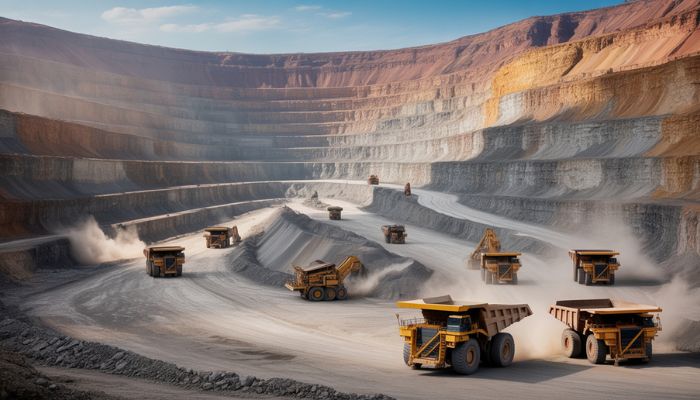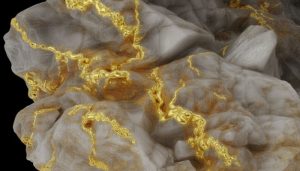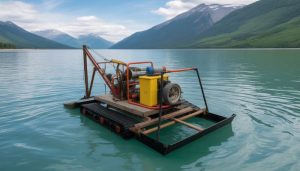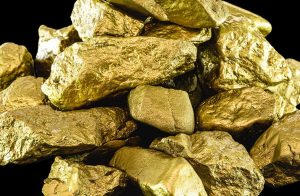On This Page
Table of Contents
Open Pit Mining is one of the most widely used methods for extracting valuable minerals and ores from the Earth’s surface. Unlike other mining techniques, it involves digging large, terraced pits or “canyons” to expose and extract minerals such as gold, copper, and coal. This technique is favored for its efficiency and cost-effectiveness, especially when the ore is relatively close to the surface.
How Does Open-Pit Work?
Open-pit is a complex endeavor that blends human ingenuity with the raw power of machinery. It provides the minerals that fuel modern life, but it also leaves an indelible mark on the environment and communities.
The first step is exploration, when geologists identify potential mineral deposits. Once they decide to move forward, they prepare the site by clearing vegetation and building infrastructure. Next comes overburden removal, when large machines remove the soil and rock covering the ore. Finally, drilling and blasting expose the underlying material.
These steps generate air pollutants like silica dust, which can irritate the lungs and lead to silicosis. They can also leach into groundwater, causing acid mine drainage and polluting the surrounding landscape. To minimize these impacts, mining operations are embracing sustainability with self-driving trucks and recycling waste rock into aggregate products. They are also implementing reclamation plans to return worked-on sites to their original state.
The Environmental Impact of Open Pit Mining
Although open-pit is a vital part of our economy and necessary for our daily lives, it does have a significant environmental footprint. It disrupts habitats, pollutes water, and can have long-term consequences for the health of humans who depend on local natural resources. The waste rock is piled into a waste dump that’s often tiered and stepped to minimize the chance of erosion or falling rocks. The remaining mineral-rich rock is crushed, ground, and transported to a processing plant to extract the valuable minerals. The rest of the waste, known as tailings, is pumped into engineered ponds until they are sufficiently dry to be stored away from the pit.
The Advantages and Disadvantages of Open Pit Mining
Open-pit excels at large-scale extraction, keeping costs down and increasing efficiency. It is used for metallic ores like aluminum and gold, and non-metallic minerals such as coal, uranium, iron ore, and phosphate.
However, the environmental damage caused by these massive open mines is severe and long-lasting. Environmental damage includes irreversible landscape changes that result in deforestation, soil erosion, and water contamination. Air pollution is another concern, as the constant movement of heavy machinery emits harmful chemicals into the atmosphere.
How Open-Pit Affects the Surrounding Ecosystem
One of the most widely used extraction methods in the world today. It allows for large-scale extraction and keeps costs down. Unfortunately, it also has significant and long-lasting environmental impacts.
These impacts include air, water, and soil pollution. Mining operations emit large amounts of dust and gases during blasting and loading/unloading activities, which contaminate surrounding soil and water with dangerous toxins. This can lead to respiratory diseases and other health issues for local populations.
Exploring the Risks of Open-Pit
The vast swathes of land cleared for open-pit destroy habitats for numerous plant and animal species. This loss of biodiversity can have long-lasting consequences, disrupting the natural balance and potentially causing extinction in some cases.
Open pit mines also often create large piles of waste rock and tailings, contaminating local water sources with harmful chemicals and heavy metals. This contamination can disrupt water quality for humans and wildlife, putting both at risk.
Open Pit vs. Underground Mining: Which is Better?
Mining is one of the most physically demanding industries. Its workers toil away in an effort to provide the raw materials necessary for human civilization, but it is also a dangerous industry with many hazards. Mining companies have a unique challenge to balance economic growth with environmental stewardship.
Key Differences Between Open-Pit Mining and Other Mining Methods
Open Pit Mining often has more significant environmental consequences compared to underground mining. This mining technique leads to deforestation, soil erosion, and the contamination of nearby water resources, making its environmental footprint considerable. In contrast, underground gold mining and equipment allow miners to access deeper ore deposits with specialized machinery, often reducing surface disturbance and minimizing some environmental impacts.
Coal Mining Using Open Pit Methods
Open-pit mining is commonly employed for coal extraction when coal seams are near the surface. In contrast, mountain-top removal is used for more extensive coal deposits. Open coal Mining helps access shallow deposits efficiently, but still contributes to substantial environmental impacts.
Open Pit Mining Systems vs. Strip Mining
Open-pit mining involves removing a large portion of the Earth’s surface, creating wide, terraced pits to access minerals below. In contrast, strip mining strips away layers of earth and rock to expose the resource underneath, making it ideal for horizontal ore bodies.
Advantages and Disadvantages of Open Pit Mining
Open Pit Mining offers significant advantages in terms of cost-efficiency and extraction speed. However, it causes substantial environmental damage, such as deforestation and water contamination, which are not as pronounced in strip mining. On the other hand, strip mining may result in less stable land structures.
Open Pit Coal Mining
Open coal Mining is typically used for shallow coal seams, which are more easily accessed using surface excavation techniques. This method provides a cost-effective solution but comes with environmental challenges.
Pit Mining vs. Underground Mining for Coal
When comparing pit coal extraction to underground methods, pit mining offers higher extraction efficiency. However, it is associated with greater environmental consequences.
FAQs
Why is Open-Pit Mining So Devastating to the Environment?
Open-pit mining is known for its environmental impact because it requires removing large amounts of earth, which leads to deforestation, soil erosion, and water contamination. The vast open pits also permanently alter landscapes, making recovery difficult.
What Are the Environmental Impacts of Open Pit?
Open Pit has significant environmental consequences, including deforestation, soil erosion, and contamination of nearby water sources.
What Is the Difference Between Open Pit and Placer Mining?
While open pit involves extracting minerals from solid rock, placer mining targets minerals like gold from loose materials found in riverbeds or sands.
Conclusion
Open pit mining is a widely used and highly efficient method for extracting valuable minerals located near the surface of the Earth. However, it comes with significant environmental consequences, including deforestation, soil erosion, and water contamination.
Read more about: How the Cyanidation Process Works



